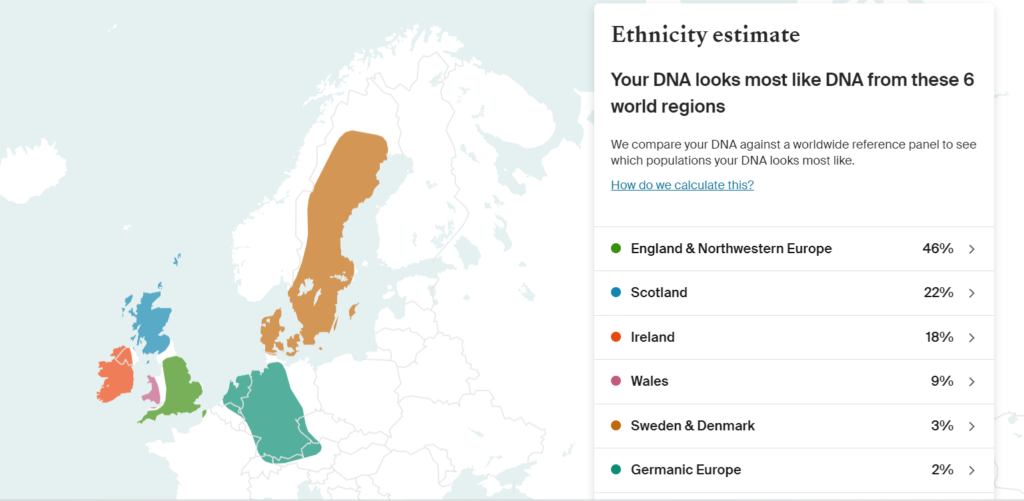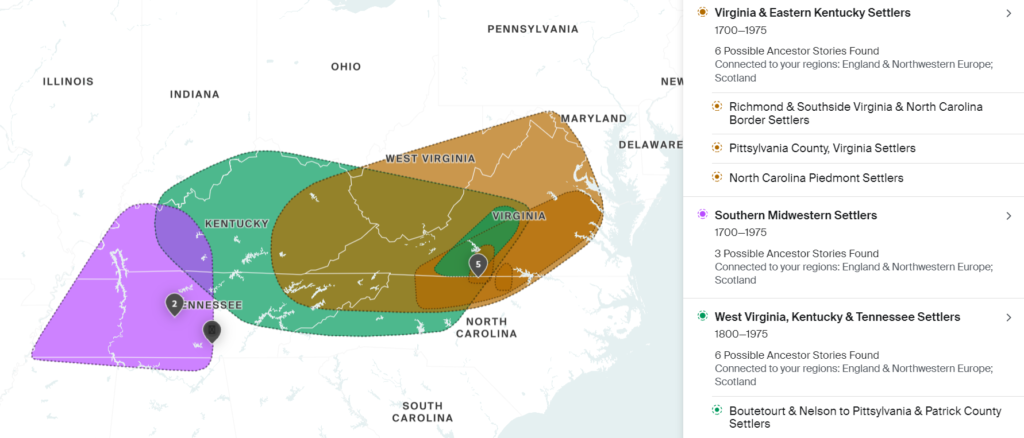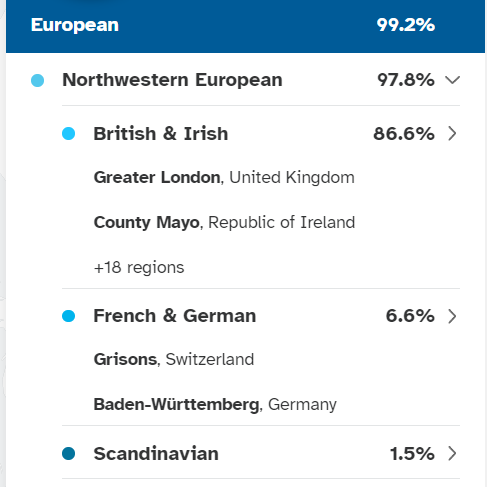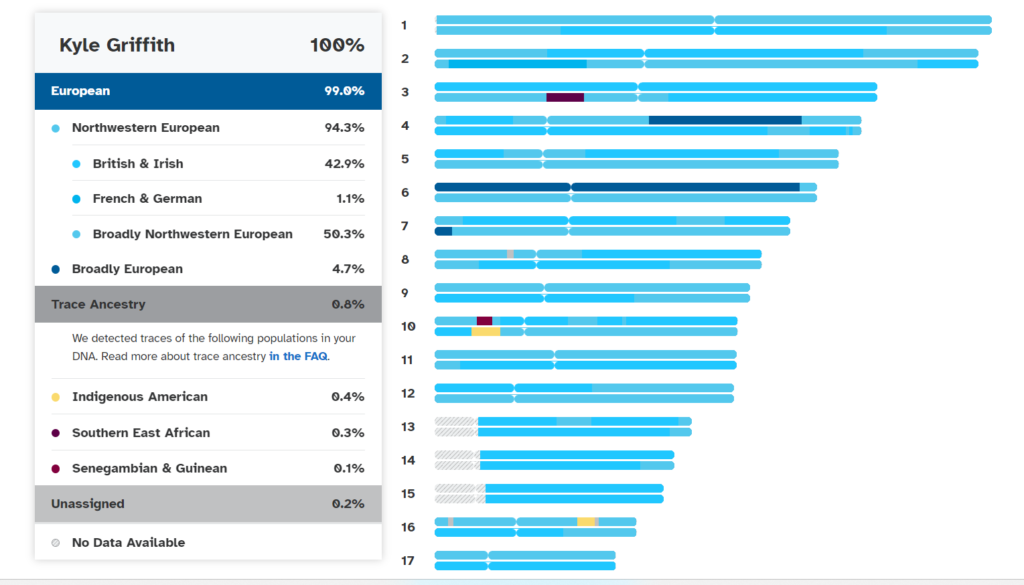Introduction
Advancements in DNA research continue to progress each year, with applications in health and genealogy becoming increasingly valuable. In my own experience, I began my journey with DNA testing by acquiring a test kit from 23andMe in 2017, followed by the AncestryDNA test in 2018. Over the course of more than five years, I have observed the evolving features and the emergence of new tools and connections on both websites.
Both DNA tests have unique advantages, but the cost can be a significant factor in buying both and most people make a choice between the two. Therefore, before making a decision, there are numerous factors to consider to ensure that one chooses the option that best aligns with their objectives and intentions. Here, I offer an overview of my results from both choices and offer insight based on experience with each.
The Price of Research
The basic “AncestryDNA kit” test from Ancestry is currently priced at $99, though it has been offered at a discounted rate of 40% off during holiday seasons in the past. Additionally, Ancestry offers a DNA test for pet dogs at a cost of $99.
On the other hand, 23andMe’s basic “Ancestry Service” test kit is priced at $117, with potential discounts of up to 30% during holiday seasons. For an additional $125, users can opt for results that include detailed health and wellness reports.
Another important note for users considering AncestryDNA–the price does not include access to Ancestry genealogy records. For basic access to browse US records through Ancestry, there is a subscription fee of $119 every six months. To access records outside of the US, the “World Explorer” subscription requires an additional $50 every six months. An even more comprehensive membership, which includes access to “All Access” records such as fold3 and newspapers.com, is available for $259 every six months. For those interested in building a family tree, it may be prudent to wait until DNA results arrive and then explore the basic US records, maximizing research efforts during the six-month subscription period.
Reading DNA Results

Kyle Griffith’s AncestryDNA results, updated July 2023
Ancestry provides results under the name “Ethnicity Estimate.” In my particular results, Ancestry has broken down the DNA from within the British Isles into distinct categories, including English, Scottish, Irish, and Welsh. These categories make up the majority of my results, with some additional traces of Scandinavian and Germanic DNA. Each percentage is an estimate, so do not take the specific numbers to heart as they may change. The sample sizes are always progressing and scientific research is always improving, so the estimate will update every few months.

Kyle Griffith’s DNA Communities, updated July 2023
There is also a “DNA Communities” feature which is able to pinpoint cultural groups of settlement in the user’s recent family history. According to my test, I’m able to confirm my maternal roots in Southside Virginia, around Pittsylvania County and the North Carolina Piedmont. I can also confirm my paternal ancestors moved from Virginia to settle in Tennessee around 1800 until my great-grandfather moved to Virginia again in 1940. This is a relatively recent feature that I am excited to see improve in the future.


Kyle Griffith’s 23andMe results, updated July 2021
23andMe provides results under the label “Ancestry Composition.” In my results, the Northwestern European DNA is primarily categorized as “British & Irish,” encompassing the modern United Kingdom and Republic of Ireland. Notably, there are no individual breakdowns for Scotland, Ireland, or Wales. However, within the “British & Irish” category, there are several dozen regions specified, including various areas within the UK. Additionally, 23andMe groups together “French & German” into a single category, offering further specificity within smaller populations that align with the results. My 23andMe results indicate an estimated 1.4% DNA from the Spanish & Portuguese region, which differs from my AncestryDNA results, where this region is not identified. Furthermore, there are traces of ancestry suggesting potential links to African and Indigenous American ancestry, which is a unique feature of these results.
It’s important to note that the default ethnicity results are displayed with a minimum confidence level of 50% accuracy. There is an additional feature called “chromosome painting,” where users can adjust the confidence level to only show results with up to 90% accuracy. As the confidence level increases, the categories may become more broadly grouped together. See how this recalculation affects the results below.

Kyle Griffith’s 23andMe results, recalculated with 90% accuracy, updated July 2021
In addition to the basic Autosomal DNA test that provides ethnicity results, 23andMe also tests paternal (Y-DNA) and maternal (mtDNA). Genetics survive through the direct paternal line and direct maternal line, which can be linked to known ancient migrations and classified from a complex system of haplogroups (read more about haplogroups on their website). Results will map out the migration pattern of the two direct lines of ancestry thousands of years ago. Remember, only male test results will yield a paternal haplogroup since females do not have a Y-chromosome.
Finally, 23andMe offers insight into variants of ancient Neanderthal ancestry. It is quite common for modern humans to have traces of Neanderthal ancestry in their DNA. The exact percentage of Neanderthal DNA can vary from person to person but typically ranges from 1% to 2% overall. In my results, 23andMe identified 305 variants that trace to Neanderthals, which is more than 88% of other customers. I remember when I first got the test it was higher, but since many thousands of more have joined the percentage has lowered. It has always been humorous to me how 23andMe compares the user against their connected relatives to rank them based on their amount of Neanderthal variants. It appears like a sort of competition to try and win, but having the most Neanderthal DNA does not seem like a bragging right. Nonetheless, my profile states “You’re in 3rd place compared to your friends and family.”
Finding Cousins and other Relatives
Ancestry has “AncestryDNA Matches” which lists DNA relatives with a variety of easily selectable filters. Relationships are quantified as both percentages and centimorgans (cM) across segments of DNA. Users may write notes for each matching relative, which will appear under their profile photo. This is useful to add quick facts about each relative. There is also the ability to assign each relative to groups, which is useful to filter matches with custom tags. The feature I use quite often is to filter matches by common ancestor, which shows matches that already have defined links between our family pedigrees.
In addition, of course there is the functionality of building and researching an endlessly complex family pedigree. Ancestry’s “ThruLines” tool organizes DNA matches by shared ancestors and can help authenticate certain research back to 5th great-grandparents. For example, I can see there are currently 17 other individuals who have taken a test and likely also descend from my x4 great-grandfather James R. Meadows. This direct comparison with family pedigree and DNA gives AncestryDNA the upper hand if the goal is finding relatives and confirming family history.
23andMe has “DNA Relatives” which lists DNA relatives with a variety of filters. Matches can be organized by surname, maternal/paternal connection, ancestor birthplaces, and a few more. Its database size is smaller compared to AncestryDNA, making it less common to find genealogical connections. Otherwise, the comparative functions are very similar. There is the ability to customize a vertical pedigree graph to link matches to, but it is limited in options. In addition, there is a map tab to locate DNA matches in the world based on their provided location and it functions about the same as Ancestry’s map. There is the ability to connect and message with DNA matches, but in my personal experience, many users on 23andMe are not genealogists. Many of them do not respond to messages, but it can be very helpful when they do. Very rarely, people will link their Ancestry pedigree to their 23andMe results and genealogy comparisons can be made that way. However, if users are more interested in the wellness side of genetics, this is where the Health upgrade shines in making comparisons between matches.
Conclusion
In all, AncestryDNA is better suited for genealogists and historians, while 23andMe focuses more on personal health and living relatives. However, 23andMe does offer the additional Y-DNA and mtDNA information where Ancestry only offers Autosomal DNA results. I have largely condensed the abilities of both sites, and there are plenty more features and research that I did not mention. All of the available information is interesting for self-discovery and genealogists will get the most out of purchasing both. Either way, wait until they’re on sale. Hopefully this has been helpful for anyone who is potentially interested in DNA testing or intending to give a DNA kit as a gift.
Related Links

Pingback: A Brief Intro to Genealogy – Griffith Preservation